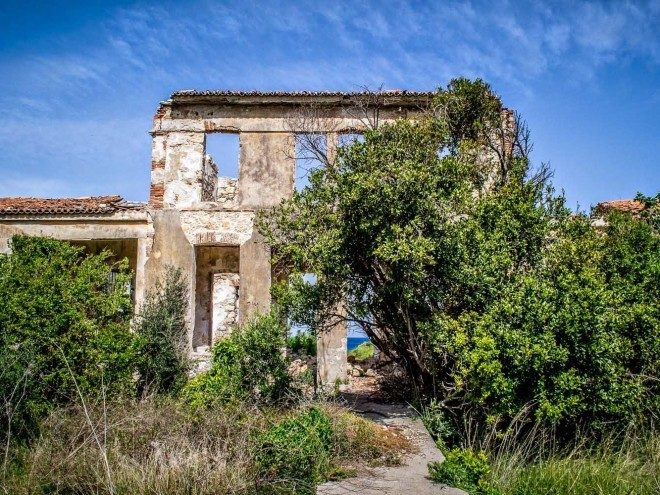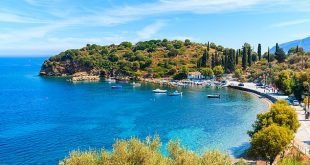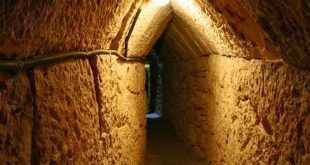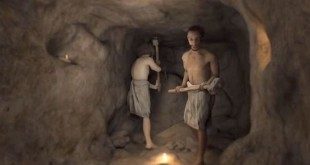“You never became a celebrity. You didn’t have the same tourist specifications with Spinalonga. You were not an isolated island. You were just an isolated place to another island. Near Karlovasi, you hosted forgotten human souls, vain dreams, and unfulfilled hopes. You were another leper-house and as such everybody still remembers you, simply but loudly: “The leper-house”, instead of your full name, “Leprosy Infirmary: Agioi Anargyri”. Greece is full of “Agioi Anargyroi” (“Holy Unmercenaries”). But when it comes to its lepers, is more eclectic.
You were filled with people who received loathing or compassion, while what they needed and wanted was love. Universal love, practical, and mainly … legislative. Against the deficient state aid, they received many donations and benefactions by the people of Samos. It is true that Samians stood by the inmates and kept them alive. Within a time-span of 76 and out of hundreds of patients, just one person was allowed to live the institution with a discharge note at his pocket. This was your best. Until then you live with the pure blue of the Aegean Sea. And this tree on the beach which is almost as old as you are. You gave them a roof over their heads for shade. At midday you say some of your common stories, while young children hear, even before they start speaking. The certain thing is that we don’t hear them. If you don’t want to, it’s OK. But if you want to, then it’s our shame”. (Taken from the website: www.arive.gr)
In the late 19th century it was deemed necessary to establish a leper-house in Samos because leper-cases were increasing significantly.
Until then lepers lived either in isolated homes outside their villages. Some were self-sufficient, while others were dependent on the compassion of their fellow villagers. On a more organized basis, the monasteries had undertaken the caring of lepers and lunatic. It is worth mentioning the Monasteries of Zoodochos Pigi and Hagia Zoni, which housed patients in buildings with a distance between them (200 and 100 meters respectively). Patient’s nursing was a responsibility undertaken by the monks and the nuns.
The leper-house of Samos was founded in 1887 in an area called “Panagitsa” (located in Karlovasi). Its construction completed in 1890. It was 67 meters long, 36 meters wide and 5,5 meters tall. It could hospitalize 27 patients.
The official inauguration of the institution took place on Sunday, June 12, 1896. The ceremony was attended by all state authorities, as well as many people.
The cost of construction was covered by the monasteries of Samos (mainly). However, from 1896 onwards, the institution received many donations, which continued until its late years of operation, due to constant financial shortages and additional needs created over the years.
The number of patients ranged from 36 in 1897, to 80 in 1931, 78 in 1933 (300 in Spinalonga), and 58 in 1958.
With the union of Samos with motherland Greece (1912), the institution came under the jurisdiction of the Greek Ministry of Health.
However, during the interwar period (1918-1939), the institution was in very bad shape and the situation was quite dis-heartening: Bony and needy patients, worn bedclothes, dirty utensils, and no electricity. Donations followed, and, thanks to the benevolence Samian, living in Samos or elsewhere in Greece, or even abroad, in 1948 the institutions was equipped with a microscope, an x-ray machine, and laundry, while in 1951 (again thanks to donations) electricity was made available. However the building needed major repair work in order to avoid collapse. This urgent need forced patients to hunger strike demanding, among other things, the improvement of their living conditions. So, in 1951 a program of employment was launched based on tool donation. In 1952 inmates once again expressed, in person, their dissatisfaction, to the American doctor, Dr. Fiss, who visited them.
At that time, the Greek State granted some 22 drachmas per day to each patient, an amount extremely inadequate compare to the many needs of the patients, since some of them were not even able to self-satisfy many of their basic needs and functions as human beings.
If, following the completion of their treatment, the patients became negative (i.e. stable and not regressed) they were granted a six-months long leave in order to visit their relatives, but always under the supervision of a local doctor, since antibiotics just inhibited the disease, not cured it.
Thus, although, in theory, whoever turned definitively negative was granted with a final discharge-note, in practice however only one patient was granted such a discharge-note.
In 1966, the leper-house of Samos was closed-down and the last ten patients were transferred to Loimodon Hospital of Athens “Hagia Varvara”.
(References: Manolis Nicolaidis: “Health in Samos and Ikaria”. Grigoris Publications.
All information is taken from the blog mpalos.blogspot.gr, which is owned by our good friend George Varvakis.
All photographs are taken by the photographer Nikos Chatziiakovou).
To watch a video for the leper-house of Samos please click here:
Photos of “Spinalonga”
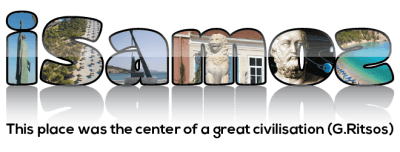 iSamos.gr Η ενημερωτική σελίδα της Σάμου! Εξερευνήστε τη Σάμο, τις παραλίες της, τη φύση της, τις ομορφιές της. Διαβάστε την ιστορία της Σάμου
iSamos.gr Η ενημερωτική σελίδα της Σάμου! Εξερευνήστε τη Σάμο, τις παραλίες της, τη φύση της, τις ομορφιές της. Διαβάστε την ιστορία της Σάμου

